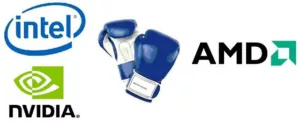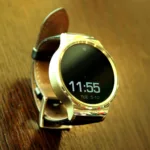Intel has for much of the last 40 years out performed every other company in their segment but this last cycle both AMD and NVIDIA solidly beat expectations while Intel missed blaming a soft PC market (though it was their ill-advised run at Mobile that really did them in). Realize that both AMD and NVIDIA are also PC technology vendors. Now one quarter is hardly a trend but it should be noted that there was a huge difference in market focus between these three vendors and Intel got caught making a very common recurring mistake which is why they slid and the others didn’t.
And, to be clear, AMD performed surprisingly well but NVIDIA kicked ass this quarter.
Let’s talk about that mistake.
Timing Worked Against Intel
When the iPad came out folks started really talking about the death of the PC and its near magical success coupled with the continued slowdown of the PC market suggested a cause and effect. All three companies were pressured heavily to move aggressively to mobile platforms. AMD even went through two CEOs in the process the pressure was so high. NVIDIA did try to do phones and had a bit more success than Intel did but quickly realized that this market wasn’t for them. Too many low cost alternatives and none of the vendors could showcase any unique value. Intel went farthest to create a competing offing but with even Qualcomm, the dominant player in the segment, suffering from low cost competitors there was no path to success for any of these vendors.
AMD simply didn’t have the resources so they remained focused on PCs, Workstations, and Simi-Custom parts like those used in game system. NVIDIA looked for other opportunities where their existing technology would have less headwind and jumped on visual computing and forms of AI tied to products like self-driving cars and others are now chasing them.
These early failures and readjustments meant that by the time Intel was ready to throw in the towel AMD and NVIDIA had stabilized and thus had far less exposure and performed better.
So what is the sustaining lesson?
Don’t Try To Become What You Aren’t
What I think is interesting is when Intel initially looked at the mobile market they decided the margins were unattractive and they couldn’t make it work. That was a really smart decision and the margins only got worse. But pressure forced them to reverse it.
As a low margin vendor you can move up market but if you even try to move down market the financial analyst will force an executive change. You see a good chunk of how a firm is measured is on how they maintain, or better yet, increase margins. A lower margin product just doesn’t get you there and moble parts are vastly lower margin parts. And you don’t make it up in volume, in fact, more volume in a low margin product actually makes the problem worse so there is no path to success. You lose if you don’t penetrate the market and you might actually lose bigger if you are incredibly successful.
On short the only path to success for Intel, or any of the others, was to displace Apple as the high margin firm, replacing Qualcomm just wouldn’t work economically particularly given Qualcomm itself was fighting off even lower margin competitors.
2-in1s
Intel did create 2-in-1s which could have flipped the market if the products had done what they needed to do. They needed to displace iPads in mass, and to do that, they needed to be used as tablets even more than they were used as laptops. But because Intel was so focused on created a Smartphone they never really were successful at changing the user behavior with this class of product which simply became an interesting alternative to a traditional laptop but never a real tablet competitor due to both size and relative battery life.
But, I believe, had the money that was spent on Smartphones instead was spent on 2-in-1s the full usage model of the 2-in-1 would have matured more quickly and the effort would have been more likely been seen as fully successful.
Microsoft
Ironically the strongest path they had to create a Smartphone alternative offering was using Microsoft Windows 10 Continuum. This was an effort to turn a Smartphone into a PC you could pocket and, if successful, could have turned the market to this new architecture. But Intel and Microsoft, who helped create the PC market, couldn’t find a path together and the end result was Microsoft used ARM, which resulted in a crippled less interesting product, and Intel didn’t benefit at all.
Had they pooled not only would both have had a better offering but their combined marketing budgets should have been enough to drive a critical mass of people to their solution.
Wrapping Up:
In the end the right choice for all three vendors was to ignore traditional Smartphones and Tablets and instead focus on making PCs more capable of displacing both. And, given all three vendors were at risk, a process where the three firms cooperated with each other and Microsoft to create substantially more capable, while still being affordable, alternative to the Smartphone and tablet while preserving PC margins would have been a far stronger path. Unfortunately it is also the path not taken and Intel was hurt because both AMD and NVIDIA recognized the futility of going it alone far quicker than Intel did.
How much you want to bet that, 5 years from now, at least one of these vendors makes this same exact mistake again. You know this entire segment should relearn the term, if you don’t hang together when faced with common problem you’ll hang separately.








